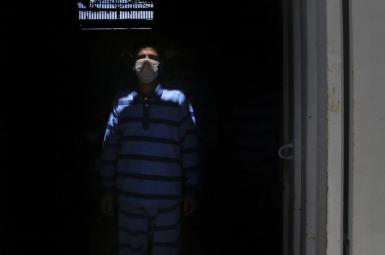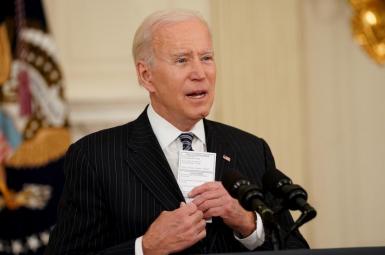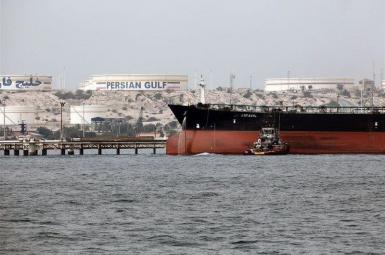
Bloody November and Massive Decline in Election Participation
Analyzing the drastic decline in the 11th parliamentary elections turnout is important in explaining the future of policy-making in Iran. The decline was so massive that, despite interfering in the ballot box, the regime was forced to accept an official rate of less than 50% turnout; this deepened the rift between the regime and those defenders of structural change.
More than ever, a violence-free revolutionary transition has emerged in Iran's political landscape. Of course, not all election boycotters have the same motives, goals, and approaches, but the outcome of the widespread boycott of the elections strengthens the strategy of structural change in Iran's political arena.
After the election, the pervasive bio-crisis of Covid-19 took place and marked one of the most severe crises in the contemporary history of Iran, and unfortunately affected a large number of Iranians. The life cycle and spread of the deadly coronavirus are still ongoing, and the government's negligence, its irresponsible and ruthless behavior in preventing and controlling the virus, and its inability to manage and control this biological crisis, objectively and tangibly have called for the Islamic Republic's retreat and revealed the inability of the existing power structure in solving the society's big and small problems.
Corona's pervasive crisis soon overshadowed the system's legitimacy crisis and the people's refusal to participate in parliamentary elections. But the weakness of the management of this biological crisis, seemingly unrelated to politics, stems from the same mismanagement that was evident in the 11th parliamentary elections results and the violent suppression of the November 2019 protests.
Among the most prominent factors that led to the boycotting of the elections is the tragic and bloody suppression of the nationwide protests in November 2019. To back up this claim, a statistical analysis of the election results is offered below.
To begin, it is necessary to mention that in the analysis, official statistics have been cited as there are numerous and varying unofficial statistics, which placing them as a basis would reduce the certainty of the conclusion. Of course, the official statistics, especially in the recent elections, are very different from the real ones, and the actual turnout is estimated at less than 30%. Needless to say, the official statistics cannot hide the trends and developments in the electoral behavior.
To better understand the new developments, let us compare the official turnout in the 11th parliamentary elections to the average turnout in the previous ten terms. Electoral turnout in 30 out of 31 provinces has declined. The only exception is Sistan and Baluchestan province, where the turnout in the 11th parliamentary elections is 2% higher than the average during the previous ten terms. The highest decline occurred in the central provinces of Alborz, Kurdistan, Tehran, and Chaharmahal and Bakhtiari.
The average decrease in the total of 31 provinces of the country reaches 16%. Taking the population of approximately 58,500,000 eligible voters into account, result in 9,400,000 fewer votes. But if we compare the official participation rate in the 11th parliamentary elections to the previous one, the rate of decline in participation is 19%. Considering the eligible voting population and population growth rate of 24.1 (based on the 2016 census), we can conclude that more than 10,700,000 Iranians did not participate in this election due to tactical or strategic, political, or economic reasons. This significant figure is based on official statistics; estimates, which are closer to the real figures, could increase the results to 18,600,000.
But to examine the impact of the November protests and their failure to resolve the government's revolting violence, 12 cities where protests were relatively prominent were selected. Tehran was the only exception with a large turnout in the 10th parliamentary elections. The four metropolises of Tehran, Mashhad, Isfahan, and Ahvaz and three major cities of Tabriz, Zahedan, and Urmia are considered. The remaining ones are small and medium-sized cities. Ethnic and religious diversity is also high in the selected cities and represents a satisfactory outline of the ethnicity of Iran.
Now let us compare the turnout in the 11th and 10th term with the 7th parliamentary elections, which had the lowest turnout ever. The average difference between the official participation rates of the above-mentioned cities in the 10th and 11th periods is 20%, while the rate for the whole country is about 19%. Although the gap between these figures is not large, a comparison with the 7th parliamentary elections sheds light on the obvious and undeniable impact of the 2019 protests. The difference in the participation rate between the cities is about 16%, while the overall rate is 8%. The importance of this conclusion becomes more evident when similar political situation and the level of competition in the two elections of the 11th and 7th parliaments are considered.
But to better understand this relationship, it is also helpful to consider the impact of the prosecution and litigation from the families of victims of the November protests. The following cities have reportedly had more casualties than confirmed: Ahvaz, Mahshahr, Kermanshah, Karaj, Isfahan, Tehran, Shahriyar, Shiraz, and Robat Karim.
Statistics show that there is a direct relationship between the decline in the participation rate and the number of casualties in these cities. Therefore, it can be concluded that the bloody repression of the protesters and the demand for justice and the discovery of the truth have played a significant role in pushing the people away from the ballot boxes. Of special importance is the decline of turnout in the cities of Robat Karim and Shahriyar which have traditionally participated largely in parliamentary elections.
Therefore, statistical and content analysis shows that the protests of November 2019 and the government's repressive approach, the denial of the crime and the attempt to cover it up, and the suppression of the protesters, had a great impact on the decline in turnout in the 11th parliamentary elections.









